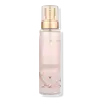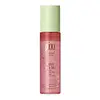What's inside
What's inside
 Key Ingredients
Key Ingredients

No key ingredients
 Benefits
Benefits

 Concerns
Concerns

 Ingredients Side-by-side
Ingredients Side-by-side

Water
Skin ConditioningOlea Europaea Fruit Oil
MaskingGlycerin
HumectantDipropylene Glycol
HumectantButylene Glycol
HumectantArgania Spinosa Kernel Oil
EmollientCaprylyl Glycol
Emollient1,2-Hexanediol
Skin ConditioningCarthamus Tinctorius Seed Oil
MaskingBetaine
HumectantPersea Gratissima Oil
Skin ConditioningIllicium Verum Fruit Extract
PerfumingTrehalose
HumectantPanthenol
Skin ConditioningEclipta Prostrata Extract
Skin ConditioningArtemisia Absinthium Extract
Skin ConditioningArnica Montana Flower Extract
MaskingAchillea Millefolium Extract
CleansingViola Mandshurica Flower Extract
AntioxidantHibiscus Esculentus Fruit Extract
Skin ConditioningAloe Barbadensis Leaf Extract
EmollientGentiana Lutea Root Extract
Skin ConditioningPelargonium Graveolens Flower Oil
MaskingCymbopogon Martini Oil
MaskingMelia Azadirachta Leaf Extract
Skin ConditioningVegetable Oil
Skin ConditioningCananga Odorata Flower Oil
MaskingRosa Damascena Flower Oil
MaskingCitrus Aurantium Bergamia Peel Oil
Propylene Glycol
HumectantMoringa Oleifera Seed Oil
EmollientTocopherol
AntioxidantWater, Olea Europaea Fruit Oil, Glycerin, Dipropylene Glycol, Butylene Glycol, Argania Spinosa Kernel Oil, Caprylyl Glycol, 1,2-Hexanediol, Carthamus Tinctorius Seed Oil, Betaine, Persea Gratissima Oil, Illicium Verum Fruit Extract, Trehalose, Panthenol, Eclipta Prostrata Extract, Artemisia Absinthium Extract, Arnica Montana Flower Extract, Achillea Millefolium Extract, Viola Mandshurica Flower Extract, Hibiscus Esculentus Fruit Extract, Aloe Barbadensis Leaf Extract, Gentiana Lutea Root Extract, Pelargonium Graveolens Flower Oil, Cymbopogon Martini Oil, Melia Azadirachta Leaf Extract, Vegetable Oil, Cananga Odorata Flower Oil, Rosa Damascena Flower Oil, Citrus Aurantium Bergamia Peel Oil, Propylene Glycol, Moringa Oleifera Seed Oil, Tocopherol
Ingredients Explained
These ingredients are found in both products.
Ingredients higher up in an ingredient list are typically present in a larger amount.
Butylene Glycol (or BG) is used within cosmetic products for a few different reasons:
Overall, Butylene Glycol is a safe and well-rounded ingredient that works well with other ingredients.
Though this ingredient works well with most skin types, some people with sensitive skin may experience a reaction such as allergic rashes, closed comedones, or itchiness.
Learn more about Butylene GlycolGlycerin is already naturally found in your skin. It helps moisturize and protect your skin.
A study from 2016 found glycerin to be more effective as a humectant than AHAs and hyaluronic acid.
As a humectant, it helps the skin stay hydrated by pulling moisture to your skin. The low molecular weight of glycerin allows it to pull moisture into the deeper layers of your skin.
Hydrated skin improves your skin barrier; Your skin barrier helps protect against irritants and bacteria.
Glycerin has also been found to have antimicrobial and antiviral properties. Due to these properties, glycerin is often used in wound and burn treatments.
In cosmetics, glycerin is usually derived from plants such as soybean or palm. However, it can also be sourced from animals, such as tallow or animal fat.
This ingredient is organic, colorless, odorless, and non-toxic.
Glycerin is the name for this ingredient in American English. British English uses Glycerol/Glycerine.
Learn more about GlycerinPropylene Glycol is an odorless, colorless liquid. As a humectant, it helps skin retain moisture. It also aids in delivering active ingredients.
Another role of this ingredient is preventing a product from melting or freezing. Propylene glycol also adds antimicrobrial properties to a product, elongating product lifespan.
This ingredient is considered an organic alcohol and commonly added into both cosmetics and foods.
Those with sensitive skin or conditions may develop a rash when using this ingredient.
Learn more about Propylene Glycol